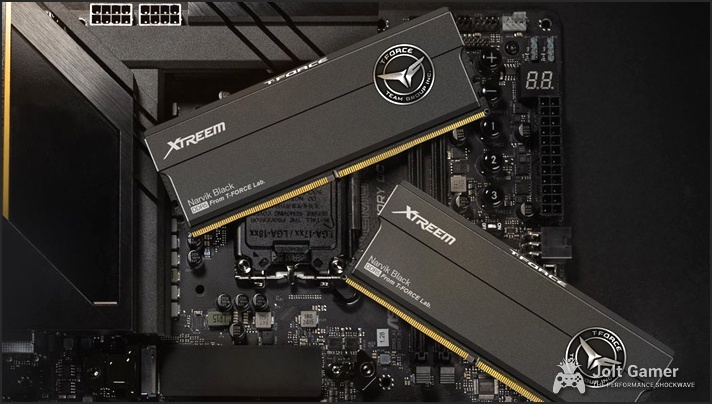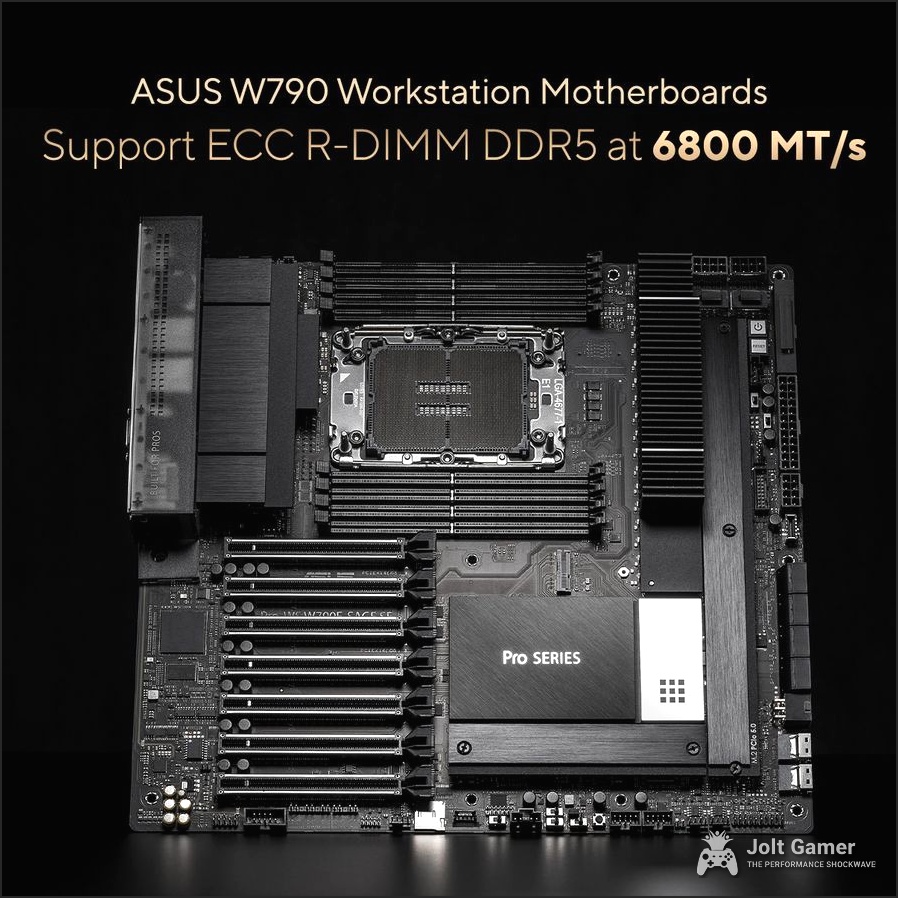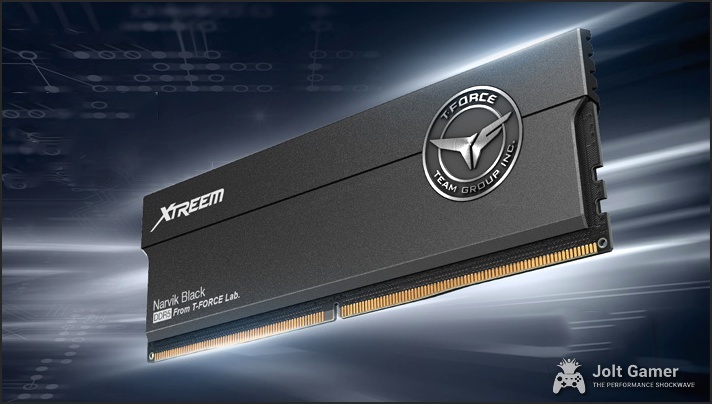Key Takeaways
- DDR5 memory offers significant bandwidth and efficiency gains, with on-die ECC and dual sub-channels enhancing stability and performance. Aim for 6000MHz CL30 for optimal gaming value.
- The NVIDIA RTX 4070 SUPER, powered by Ada Lovelace, is a 1440p gaming powerhouse, excelling with DLSS 3, Ray Tracing, and AI features for both gaming and creative work.
- ATX 3.0 PSUs are crucial for next-gen GPUs like the RTX 4070 SUPER, providing superior transient power handling and a dedicated 16-pin PCIe Gen 5 connector for stability and future-proofing.
- Building your own PC provides superior value, upgradeability, and longevity compared to most pre-builts and gaming laptops, allowing for component optimization within your budget.
- Strategic component selection (CPU, GPU, RAM, PSU) based on performance, value, and compatibility is key to a balanced and satisfying gaming rig.
Introduction: The New Era of PC Building – Value, Power, and Future-Proofing
The landscape of PC gaming is constantly evolving, with new hardware generations pushing the boundaries of performance and demanding smarter choices from builders. In 2025, optimizing your gaming rig isn’t just about raw power; it’s about intelligent component selection that balances cutting-edge technology with long-term value and future-proofing. This guide will cut through the noise, focusing on the synergistic power of DDR5 memory, the NVIDIA RTX 4070 SUPER GPU, and the essential ATX 3.0 power supply standard. We’ll show you how to navigate these critical choices to craft a gaming PC that doesn’t just perform today, but remains a formidable machine for years to come, directly addressing the community’s desire for longevity and optimal value.
Decoding DDR5: The Memory Revolution Under Your CPU
DDR5 SDRAM, officially released by JEDEC in July 2020, represents a monumental leap forward from its predecessor, DDR4. Designed to significantly reduce power consumption while doubling bandwidth, DDR5 is no longer just a buzzword – it’s the foundational memory technology for all modern gaming platforms. Its architectural enhancements are not merely incremental; they redefine how memory interacts with your CPU, leading to more efficient data handling and improved system stability. Key innovations include on-die error-correction code (ECC) for enhanced reliability, and a shift from single-channel to two independent 32-bit (or 40-bit for ECC) channels per DIMM, drastically improving memory access parallelism. Furthermore, the integration of on-board Power Management Integrated Circuits (PMICs) ensures more stable and precise voltage delivery directly to the memory chips, enabling higher speeds and greater overclocking potential. Understanding these core changes is crucial for any builder looking to maximize their system’s performance.
Key DDR5 SDRAM Specifications (JEDEC Standard)
- Official Release
- July 14, 2020
- Nominal Voltage
- 1.1 V
- Clock Rate Range
- 2,000–4,400 MHz
- Transfer Rate Range (Standard)
- 4,000–6,400 MT/s (PC5-32000 to PC5-51200)
- Maximum Bandwidth (Standard)
- 32.0–70.4 GB/s
- Maximum DIMM Capacity
- 512 GB (per stick)
- Channels per DIMM
- 2 (32-bit each, or 40-bit with ECC)
- On-die ECC
- Yes
- PMIC Integration
- Yes (on-module voltage regulation)
DDR5 vs. DDR4: A Generational Leap
| Feature | DDR4 | DDR5 |
|---|---|---|
| Standard Speeds | 2133-3200 MT/s | 4000-6400 MT/s (up to 9600 MT/s overclocked) |
| Nominal Voltage | 1.2 V | 1.1 V |
| Channels per DIMM | 1 (64-bit) | 2 (32-bit each) |
| On-die ECC | No (external for true ECC) | Yes (internal for chip reliability) |
| PMIC | Motherboard | On-DIMM |
| Max Capacity per DIMM | 64 GB | 512 GB |
| Minimum Burst Length | 8 | 16 |

Beyond standard specifications, the DDR5 ecosystem is rapidly evolving, with manufacturers like Teamgroup pushing the envelope. Their T-Force Xtreem CKD DDR5-8800 memory kit, for instance, leverages CUDIMMs with onboard clock drivers (CKD) to ensure cleaner signals and claims stable operation at an ‘exclusive frequency of 9,600MHz’ on compatible motherboards. This reflects a broader trend of significant overclocking potential, with Teamgroup’s T-Force Lab achieving an impressive DDR5-10666MHz overclock on an ASRock Z890 OCF. While G.Skill and ASRock currently hold the absolute world record at DDR5-12666 with LN2 cooling, these real-world achievements underscore the immense headroom and performance scalability DDR5 offers. For gamers, this means higher frame rates and snappier system responsiveness, especially in CPU-bound scenarios.
The Powerhouse GPU: NVIDIA GeForce RTX 4070 SUPER
At the heart of any formidable gaming PC lies a powerful graphics card, and the NVIDIA GeForce RTX 4070 SUPER stands out as a sweet spot for high-performance 1440p gaming in 2025. Built on the ultra-efficient Ada Lovelace architecture, it represents a significant upgrade over its non-SUPER predecessor, offering a compelling blend of raw power, advanced features, and improved value. This card isn’t just about pushing pixels; it’s about leveraging NVIDIA’s full ecosystem of technologies to deliver an immersive and responsive gaming experience, alongside robust capabilities for creative and productivity tasks. Its inclusion in a build signifies a commitment to modern gaming at high refresh rates and settings.
NVIDIA GeForce RTX 4070 SUPER Key Specifications
- GPU Architecture
- NVIDIA Ada Lovelace
- GPU
- AD104
- CUDA Cores
- 7168
- Tensor Cores (4th Gen)
- 224
- RT Cores (3rd Gen)
- 56
- Memory
- 12 GB GDDR6X
- Memory Interface
- 192-bit
- Memory Clock
- 1313 MHz (21 Gbps effective)
- Boost Clock (Reference)
- 2475 MHz (up to 2670 MHz OC)
- TGP (Total Graphics Power)
- 245 W
RTX 4070 SUPER Variants


The RTX 4070 SUPER leverages NVIDIA’s suite of advanced gaming technologies to deliver its performance. Dedicated 3rd Generation Ray Tracing Cores provide stunningly realistic lighting and reflections, while 4th Generation Tensor Cores power the revolutionary DLSS 3. This AI-driven upscaling technology, unique to RTX 40 Series GPUs, generates additional frames and enhances image quality, offering up to 4X performance compared to brute-force rendering. For competitive gamers, NVIDIA Reflex minimizes system latency, ensuring quicker reaction times. Beyond gaming, the 4070 SUPER is a creative powerhouse, supporting the NVIDIA Studio platform for accelerated 3D rendering and video editing, and featuring 8th generation NVENC with AV1 encoding for high-quality streaming. The NVIDIA Broadcast app further enhances voice and video calls with AI effects, making it a versatile tool for content creators and professionals alike.
RTX 4070 SUPER Gaming Performance (Average FPS at 1440p, High Settings)
NVIDIA GeForce RTX 4070 SUPER: Strengths & Considerations
Pros
- Excellent 1440p gaming performance, often rivaling previous-gen higher-tier cards.
- Superior power efficiency with the Ada Lovelace architecture.
- Full support for DLSS 3, Frame Generation, and Ray Tracing, enhancing visual fidelity and frame rates.
- Robust feature set for creators and streamers (NVIDIA Studio, NVENC AV1, Broadcast).
- More competitive pricing compared to higher-end 40-series cards, offering strong value.
Cons
- 12GB VRAM may be a limitation for future 4K gaming or demanding creative tasks.
- Requires a compatible ATX 3.0 PSU for optimal stability, especially under transient loads.
- Still a premium price point, though improved value over its predecessor.
- Performance uplift over the original RTX 4070 is significant, but not revolutionary for all users.
Powering the Future: Understanding ATX 3.0 PSUs
Modern graphics cards, particularly the NVIDIA RTX 40 series, are incredibly powerful but also come with unique power delivery demands. The ATX 3.0 standard, released in 2022, was specifically designed to meet these escalating requirements, making it a critical consideration for any next-gen PC build. Unlike older power supply units (PSUs), ATX 3.0 units are engineered to handle the rapid and extreme power spikes (transient excursions) that modern GPUs can exhibit, preventing system instability or even potential hardware damage. Adopting an ATX 3.0 PSU isn’t just about compatibility; it’s about ensuring the long-term stability, safety, and optimal performance of your high-end components.
ATX 3.0 vs. Older PSU Standards
| Feature | ATX 2.x (Typical) | ATX 3.0 |
|---|---|---|
| Transient Power Handling (GPU) | Limited | Up to 1800W for 100 microseconds (3x GPU TGP) |
| PCIe Gen 5 Connector | No (requires adapters) | Yes (16-pin 12VHPWR) |
| Power Rails | 12V, 5V, 3.3V | 12V, 5V, 3.3V |
| Efficiency at Low Loads | Variable | Improved (e.g., 60% efficiency at 10W or 10% load) |
| Compatibility | Broad | Broad (backward compatible for most boards) |
| Future-Proofing | Low for new GPUs | High for current and future GPUs |
The Community Pulse: Building Smart, Not Just Expensive
It’s good, but it could be better: The RAM is overpriced, you can get 6000MHz CL30 for $86… It will end up costing $12 more but you get a better CPU cooler and a waaaaaaaaay better PSU.
Our community’s sentiment is clear: gamers are driven by a desire for optimized value and longevity in their hardware. There’s a healthy skepticism towards pre-built systems and a meticulous scrutiny of component choices, especially for budget builds. The frustration with overpriced, poorly configured gaming laptops that offer limited repairability and short lifespans is palpable. This collective wisdom underscores the importance of informed decision-making and the tangible benefits of custom PC building. Our goal with this blueprint is to empower you to make those smart choices, ensuring every dollar spent translates into tangible performance and lasting satisfaction, echoing the community’s pragmatic approach.
The JoltGamer Recommended Builds: Balancing Performance and Value
Based on our analysis of DDR5, the RTX 4070 SUPER, ATX 3.0, and community feedback, here are JoltGamer’s recommended build configurations. Each tier is designed to maximize performance per dollar, with an eye towards upgradeability and longevity. Remember, these are starting points – feel free to adjust based on specific deals and personal preferences.
Tier 1: The Optimized 1080p/Entry 1440p Build (~$1000 – $1200)
- CPU: AMD Ryzen 5 7600 (Excellent gaming performance for the price, AM5 platform for future upgrades).
- GPU: AMD Radeon RX 7800 XT or NVIDIA RTX 4060 Ti (Strong 1080p, capable 1440p. RTX 4060 Ti for DLSS/RT focus).
- Motherboard: B650 (Solid feature set, good value for AM5).
- RAM: 32GB (2x16GB) DDR5-6000 CL30 (Sweet spot for AM5 performance and value).
- Storage: 1TB NVMe PCIe Gen4 SSD (Fast boot and game loads).
- PSU: 750W ATX 3.0 80+ Gold (Ample power, future-proof for GPU upgrades, essential for stability).
- Case: Mid-tower with good airflow and reasonable price.
- CPU Cooler: Quality air cooler (e.g., Thermalright Phantom Spirit/Peerless Assassin) or a basic 240mm AIO.
Tier 2: The High-Performance 1440p Gaming Rig (RTX 4070 SUPER Focus) (~$1500 – $1800)
- CPU: Intel Core i5-14600K or AMD Ryzen 7 7800X3D (Top-tier gaming CPUs for high refresh rates).
- GPU: NVIDIA GeForce RTX 4070 SUPER 12GB (The star of this build, optimized for 1440p with DLSS 3 and RT).
- Motherboard: Z790 (Intel) or X670E/B650E (AMD) (Robust VRMs, PCIe Gen5 support for future upgrades).
- RAM: 32GB (2x16GB) DDR5-6000 CL30 (Optimal performance for both platforms).
- Storage: 2TB NVMe PCIe Gen4 SSD (Plenty of fast storage for games and applications).
- PSU: 850W ATX 3.0 80+ Gold/Platinum (Ensures stable power for RTX 4070 SUPER and future upgrades).
- Case: High-airflow mid-tower with good cable management options.
- CPU Cooler: 280mm or 360mm AIO liquid cooler (Keeps high-end CPUs cool under load).
Tier 3: The Enthusiast 1440p/Entry 4K Build (~$2000+)
- CPU: Intel Core i7-14700K/14900K or AMD Ryzen 9 7900X3D/7950X3D (Best-in-class for gaming and productivity).
- GPU: NVIDIA GeForce RTX 4070 Ti SUPER 16GB or RTX 4080 SUPER 16GB (For pushing higher frame rates at 1440p or stepping into 4K).
- Motherboard: High-end Z790 (Intel) or X670E (AMD) (Premium features, robust power delivery for overclocking).
- RAM: 64GB (2x32GB) DDR5-6000 CL30 or higher speed (For demanding multitasking and future-proofing).
- Storage: 2-4TB NVMe PCIe Gen4/Gen5 SSD (Blazing fast and ample storage).
- PSU: 1000W+ ATX 3.0 80+ Platinum/Titanium (Overkill for stability, efficiency, and significant upgrade headroom).
- Case: Full-tower or high-end mid-tower with exceptional airflow and aesthetics.
- CPU Cooler: High-performance 360mm AIO liquid cooler (Essential for enthusiast-grade CPUs).

The JoltGamer Verdict: Build Smart, Game Hard
In the dynamic world of PC gaming, making informed component choices is paramount. By understanding the advancements in DDR5 memory, leveraging the formidable power of the NVIDIA GeForce RTX 4070 SUPER, and embracing the stability of ATX 3.0 power supplies, you are not just building a PC – you are crafting a future-proof gaming machine. This definitive blueprint provides the knowledge and recommendations to navigate the complexities, ensuring your next rig delivers exceptional performance, value, and longevity. Don’t settle for less; empower yourself to build the ultimate gaming experience.
Frequently Asked Questions About Next-Gen PC Builds
Is DDR5 worth it over DDR4 for gaming in 2025?
Absolutely. While initial DDR5 latency was a concern, current modules (especially 6000MHz CL30) offer significant bandwidth advantages, future-proofing, and are now the standard for all new platforms like AMD AM5 and Intel’s latest generations. The performance uplift, especially in CPU-bound games, makes it a worthwhile investment.
Do I really need an ATX 3.0 PSU for an RTX 4070 SUPER?
While an older high-quality PSU might work, an ATX 3.0 PSU is highly recommended. It’s specifically designed to handle the transient power spikes of modern GPUs like the RTX 4070 SUPER, preventing instability and ensuring long-term reliability. It also provides a native 16-pin PCIe Gen 5 connector, simplifying cabling and improving safety.
Can I use an RTX 4070 SUPER for 4K gaming?
The RTX 4070 SUPER is primarily optimized for high-refresh-rate 1440p gaming. While it can handle some 4K titles, especially with DLSS 3 enabled, you might need to adjust settings for a smooth experience. For consistent 4K performance, higher-tier cards like the RTX 4070 Ti SUPER or RTX 4080 SUPER are generally recommended.
What’s the most important component for a gaming PC build?
The GPU (Graphics Processing Unit) is generally the most critical component for gaming performance, as it directly impacts frame rates and visual quality. However, a balanced system is key; a powerful GPU can be bottlenecked by a weak CPU or insufficient RAM. Aim for a harmonious blend across all components for the best experience.
How important is CPU cooling for these builds?
Very important, especially for the higher-tier CPUs recommended. Modern CPUs can generate significant heat, and effective cooling ensures they can maintain their boost clocks for optimal performance, preventing thermal throttling. For high-end CPUs, a quality air cooler or an AIO liquid cooler is essential.


